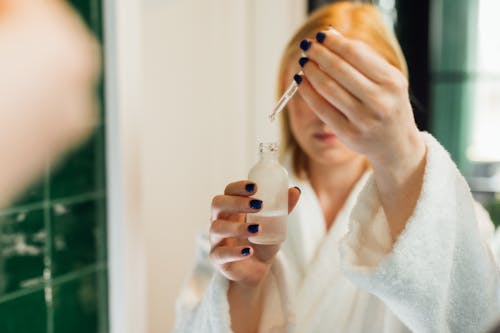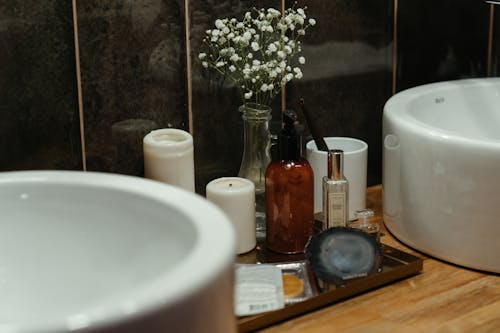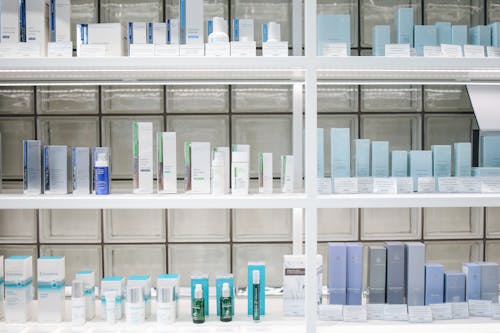
What is salicylic acid: Is it suitable for oily & blemish-prone skin?
These days, there’s so much conflicting advice and rhetoric out there about our skincare routines. Serums, acids, exfoliants, peels – it can get confusing and even dangerous for your skin to mess around with all these different chemicals mixing and reacting with one another. You could end up with a compromised skin barrier instead of a glowing and healthy complexion if you’re not careful about a) what you use and b) how you use it.
Salicylic acid is one of those recent trendy products that we hear a lot about, but aren’t entirely sure what it does, how it works and what skin types should be using it.

If you’re anything like me, when you hear the word ‘acid’, you may automatically cringe, thinking of inflamed and dried up skin. Although my skin type is naturally quite oily, it can also be sensitive to strong products, which is why I’m always cautious and use only dermatologist recommended products on my skin.
And when salicylic acid kept coming up again and again in skincare consultations as a potential solution to the adult acne and oily skin I was experiencing, I realised that this wasn’t a skincare fad that would work for a few weeks before totally drying out my skin – it was a new skincare discovery that was here to stay.
What exactly is salicylic acid?

A derivative of aspirin, this acid is also known as ortho-hydroxybenzoic acid, a crystalline solid, sourced naturally from plants (generally willow bark) for over 200 years. It’s what’s known as a beta-hydroxy-acids (BHAs), which you may have heard often mentioned alongside AHAs, which target dry or ageing skin. BHAs, however, are oil-soluble and therefore great for targeting issues on oily, acne-prone skin
The ingredients have been used in acne treatment and even wart exfoliators in the past and it’s now becoming widely used in topical skincare the world over.
What does salicylic acid do?

Anyone who suffers form acne knows that, although the acne blemished themselves are the worst, the acne scarring left afterwards are a close second. Salicylic acid works not only to target and reduce the severity of acne blemishes, but it also functions as a gentle chemical exfoliator that slowly smooths and evens out skin tone with consistent and long-term use. It does this by removing excess dead skin such as scar tissue and exfoliating the clearing the bacteria and excess sebum from pores that have the potential to become clogged and turn into acne clusters.
How should I be using salicylic acid?

With acids, the dosage that you’re using is important, as it corresponds to the severity of the problem and your skin’s type. Even if you feel your skin is a disaster, don’t jump in straight away with a strong cleanser, exfoliater or moisturiser at 2% salicylic acid, as it’s a lot for your skin to handle. Like a retinol, it needs time to build up to these things, especially if, like me, you have skin that inflames easily. It’s recommended that the average person start off with a 0.5% unless specifically told otherwise by a licensed and registered dermatologist. If you have sensitive skin, it’s recommended you start off even lower than that.
You can use salicylic acid daily, but it’s recommended that, again, like retinol, you introduce it to your routine slowly, especially if you’re using a strong formula. Gradually build up to daily use as it’s a deeply-penetrating acid and could irritate and dry out skin.
How do I know if salicylic acid is right for my skin type?

As we mentioned before, oily, acne-prone skin is in need of salicylic acid. If you struggle with constant blemished, skin that’s shiny before you have your lunchtime coffee or even just an uneven complexion due to blackheads, previous acne or even leftover scarring form whiteheads, salicylic acid is the skincare essential you need in your routine. Adult acne, teenage blemishes and even hormonal acne skin types will all benefit from using it. If your skin is in need of a little antibacterial or anti-inflammatory help, this ingredient is particularly useful.
What form should salicylic acid take?

At one time it was used as a spot treatment, but it’s now morphed into many forms of skincare as a preventative measure against spots. This means you can use it in your cleanser, exfoliator, toner or even skin cream. Personally, I use a salicylic wash as part of my cleansing routine and have seen a real difference, but it’s up to your personal preference or your dermatologist’s recommendations.
If you begin to include salicylic acid in your routine, it’s essential that you incorporate SPF into your routine. Salicylic acid – for all it’s wonderful results – is still an acid, so making sure your skin is protected while it’s vulnerable is your number one priority. There’s no point using exfoliating acids if you don’t use suncream, as the acids expose smoother but more sensitive skin beneath the scarred or blemished skin. This sensitive skin will experience major photo-damage over the years if not protected, meaning all your exfoliating acids were for nothing in the long run.






